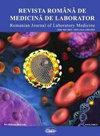家族性高胆固醇血症评估的遗传诊断方法
IF 0.5
4区 医学
Q4 MEDICINE, RESEARCH & EXPERIMENTAL
引用次数: 0
摘要
家族性高胆固醇血症(FH)表现为动脉粥样硬化,是冠心病的主要病因。目前使用的是基于临床和临床外数据的不同评分系统,但FH的诊断应仅在存在致病遗传缺陷的情况下进行。本研究调查了12名有症状(先前诊断为动脉粥样硬化)和无症状的家庭成员。使用市售试剂测定血脂。使用商业试剂和定制引物通过Sanger测序进行遗传调查,同时使用体外诊断医疗设备评估拷贝数变化和选定的40个点突变。对于被调查的患者,由于受试者正在接受降脂治疗,血脂在参考范围内,吸烟是唯一可识别的额外危险因素。通过Sanger测序鉴定了低密度脂蛋白胆固醇受体基因中的4个良性外显子变体和3个内含子变体。未发现拷贝数变异和40个点突变。虽然被单独认为是良性的,但在其他危险因素的影响下,已确定的遗传条件的综合作用可能是致病的。即使使用临床评分进行诊断,分子诊断也往往具有挑战性,这证明了FH遗传病因的复杂性。本文章由计算机程序翻译,如有差异,请以英文原文为准。
Genetic Diagnostic Approaches in Familial Hypercholesterolemia Evaluation
Abstract Familial hypercholesterolemia (FH) manifested as atherosclerosis is a major cause of coronary heart disease. Different scoring systems based on clinical and paraclinical data are currently used, but the FH diagnosis should be made only in the presence of the causative genetic defect. In the present study, 12 symptomatic (previously diagnosed with atherosclerosis) and asymptomatic family members were investigated. Serum lipids were measured using commercial reagents. A genetic investigation was performed by Sanger sequencing using commercial reagents and custom primers, while copy number variations and a selected set of 40 point mutations were evaluated using in vitro diagnostic medical devices. For the investigated patients, serum lipids were within the reference range, due to the fact that the subjects were following lipid-lowering therapy, and smoking was the only identifiable additional risk factor. Four benign exon variants and three intron variants situated within the low-density lipoprotein cholesterol receptor gene were identified by Sanger sequencing. No copy number variations and none of the 40 investigated point mutations were determined. Although independently considered benign, the combined effect of the identified genetic conditions could be pathogenic under the influence of additional risk factors. Even in the presence of a diagnosis made using clinical scores, the molecular diagnosis is often challenging, attesting to the complexity of FH genetic etiology.
求助全文
通过发布文献求助,成功后即可免费获取论文全文。
去求助
来源期刊

Revista Romana De Medicina De Laborator
MEDICINE, RESEARCH & EXPERIMENTAL-
CiteScore
0.31
自引率
20.00%
发文量
43
审稿时长
>12 weeks
期刊介绍:
The aim of the journal is to publish new information that would lead to a better understanding of biological mechanisms of production of human diseases, their prevention and diagnosis as early as possible and to monitor therapy and the development of the health of patients
 求助内容:
求助内容: 应助结果提醒方式:
应助结果提醒方式:


